
Sunlit Mansion
The house at the heart of the estate
Recently a member of WAY organised a trip to Bletchley Park, base of the World War 2 code breakers—probably best known in the public conscious as “the place Alan Turing built a computer to break the German Enigma”, almost none of which is true. A whole bunch of us turned up, in fact probably too many given the large numbers resulted in everyone being in their own small group and struggling to get together for lunch. Still, Heather, Gemma and I took advantage to see what turns out to be a fascinating place. The ticket acts as an annual pass as well, which may well be handy.

Turing
In sculpted form
Despite Bletchley always holding an attraction, even for someone who doesn’t go in for World War relics, I’d always assumed its country house status meant it as fairly inaccessible to visit. It’s ironic then to realise that it isn’t anything of the sort, Bletchley being chosen in the first place in part due to its location, sitting immediately adjacent the station at the confluence of the west coast line linking London, Birmingham, and Manchester and the Varsity line between Oxford and Cambridge. So it was a simple and quick journey out of Euston to arrive at an at least reasonably sunny (for February) Bletchley, quickly strolling our way to the entrance. It must have been a peculiar sight once with the strange mixture of men and women heading the same way, a collection of military types, crossword solvers, puzzle enthusiasts and Oxbridge dons (not to mention the hundreds of Wrens who kept the workings of the place going). One is reminded of the parallels with that other great enclave of secrecy on the other side of the Atlantic, where Los Alamos hosted equally reticent visitors—though there, of course, the mix was probably not so diverse. While another great hero Richard Feynman was fixing handheld calculating machines Turing was helping to build huge machines of his own.

Not A Riddle
But an Enigma
Though Bletchley is almost synonymous with Enigma the routine intercept and decryption of such coded messages is possibly not even the most impressive feat achieved in that ultra secret environment. The Poles had already broken into Enigma before the war, and shared their intelligence when it became clear Hitler was bent on invasion, and the general workings of the machine were known. So while a great deal of insight and ingenuity went into developing standard techniques to find starting points, and to build giant, whirling and loud Bombes, brilliant minds were also attacking other problems. Not least was Lorenz, used by German High command, the workings of which were determined without ever actually seeing a physical machine and which led to Colossus, arguably the first real computer. It’s difficult to imagine just what a feat of intellectual reasoning that is.
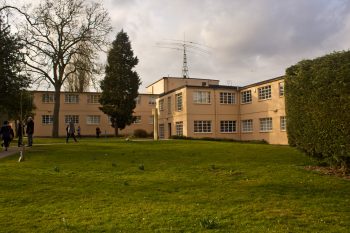
Block B
A codebreaker’s building
Bletchley’s secrets went elsewhere after the war (which was shortened by years by the code breaking efforts) and it found a variety of uses before falling into disrepair and threat of demolition. Fortunately it was saved for the nation. Today the wooden huts, once such a scene of feverish secret activity, are wandered by relaxed visitors. They are a mixture of almost claustrophobically small spaces and tight corridors, and open areas where once bombes whirled. At the head of it all sits the mansion house and its stables where the first offices were. Beside them a lake offers serene views, and must have been a welcome place to relax during down time for those crammed together in Bletchley’s huts and buildings. The museum itself obviously started out without as much money as some places, but it seems to be finding its feet and improving. The displays are informative (though the area immediately welcoming people, complete with slightly too long video, is inevitably too crowded and produces a slow moving and frustrating introduction). Highlight was probably the reconstructed bombe, complete with Wren dressed volunteer to explain and demonstrate. There is actually a surprisingly large amount to see, and we didn’t have time for it all. Hopefully a return visit will come later in the year, along with a chance to see the museum of computing which is also on site.
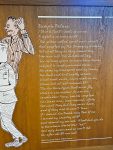
Bumph Palace
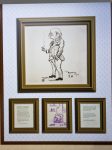
Cartoons
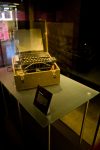
Encoder
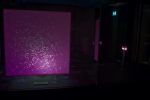
Data Comparison

We Also Served

Back of the Bombe
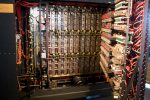
Bombe Back
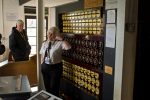
Bombe Demonstration

Griffin

Manor House

Skylight
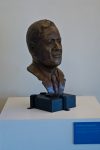
Tutte
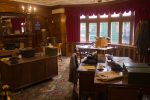
Don’t Help The Enemy
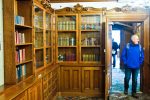
The Library
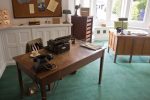
Desk

Discussion

Turing Office

The Lake
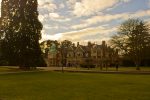
Sunlit Mansion

Hello There Swan

Ducks On Land

Fountain

Turing

Porgy
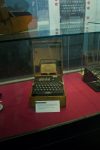
An Enigma

Radio Collection
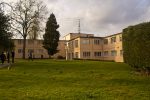
Block B
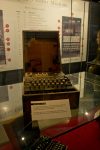
Not A Riddle
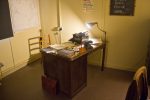
Comments and Pings